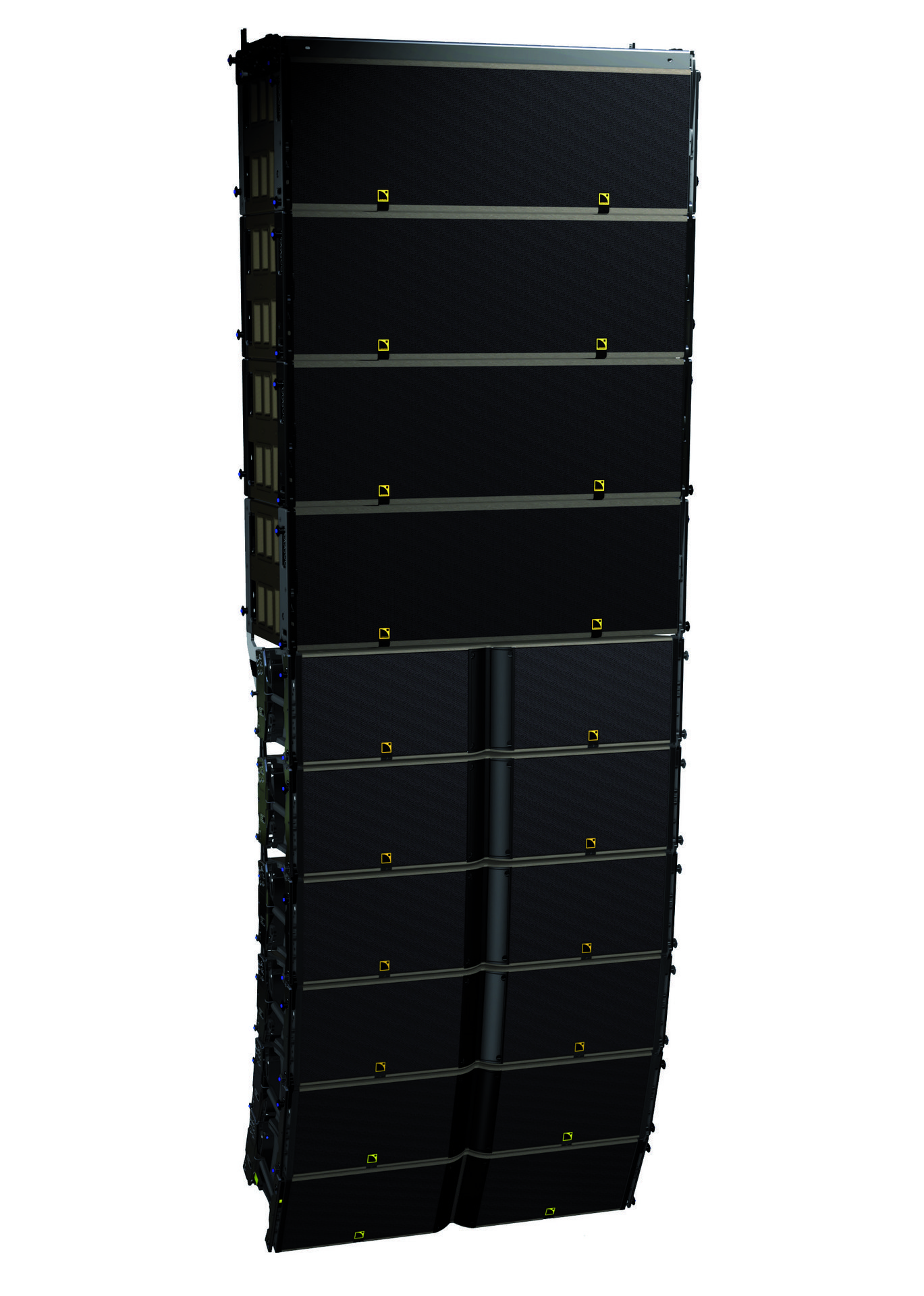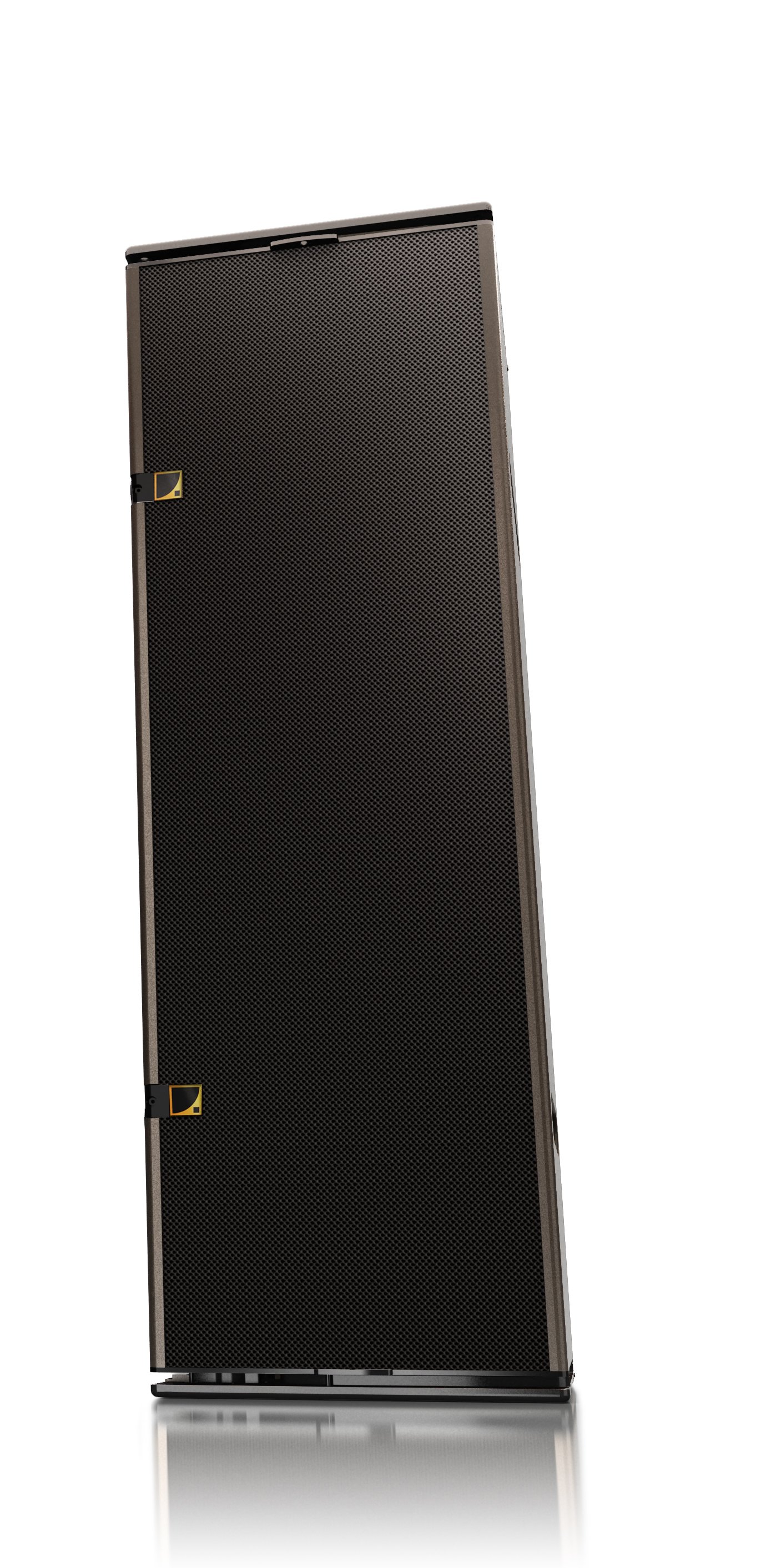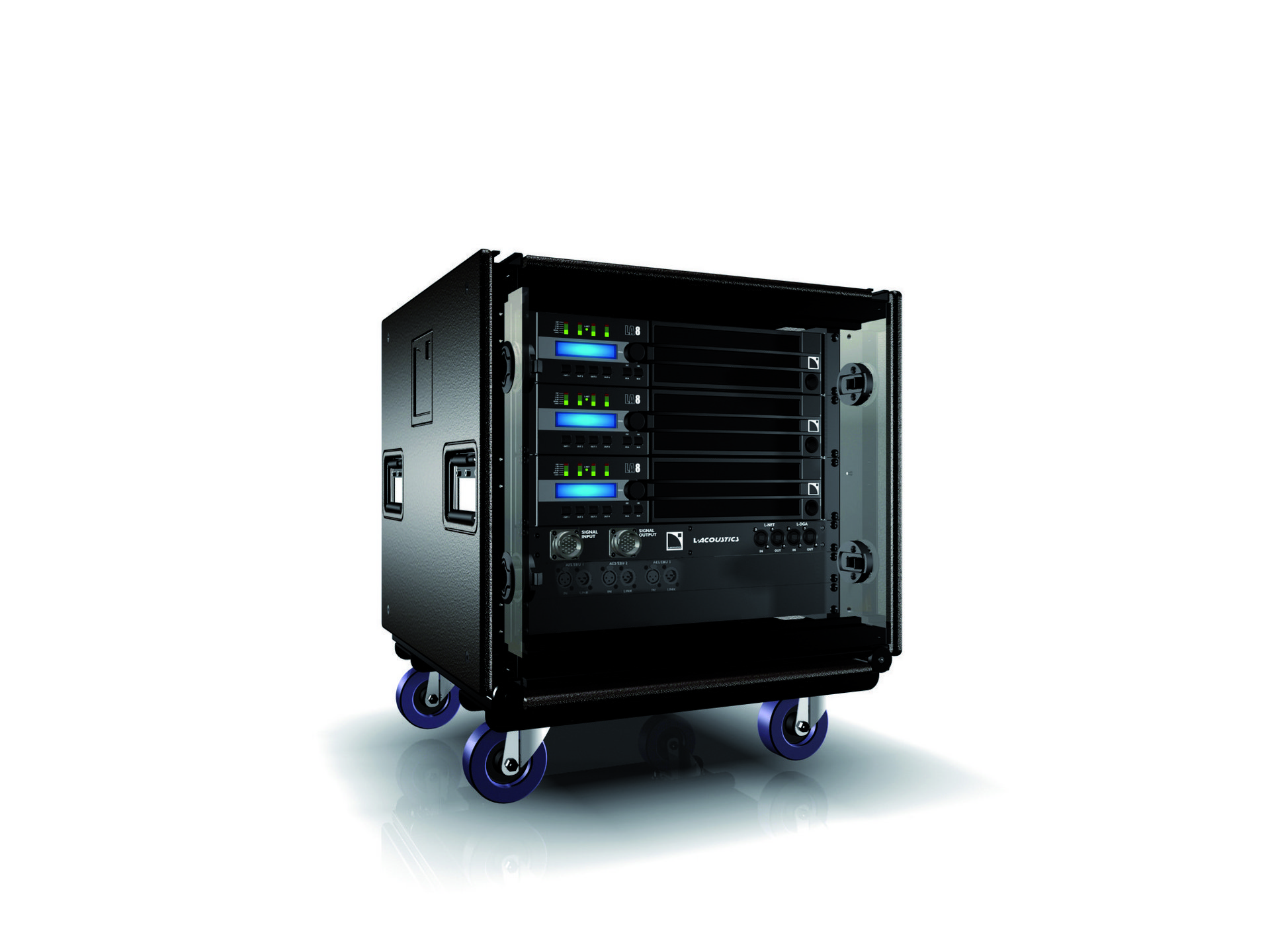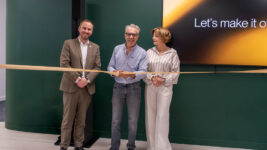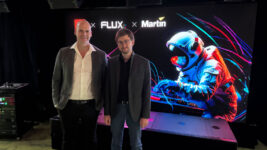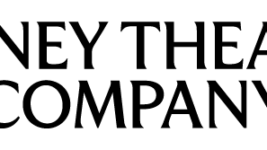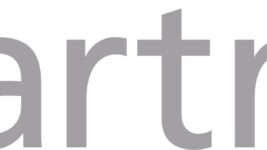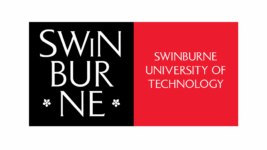News
28 Nov 2013
K2 Revealed
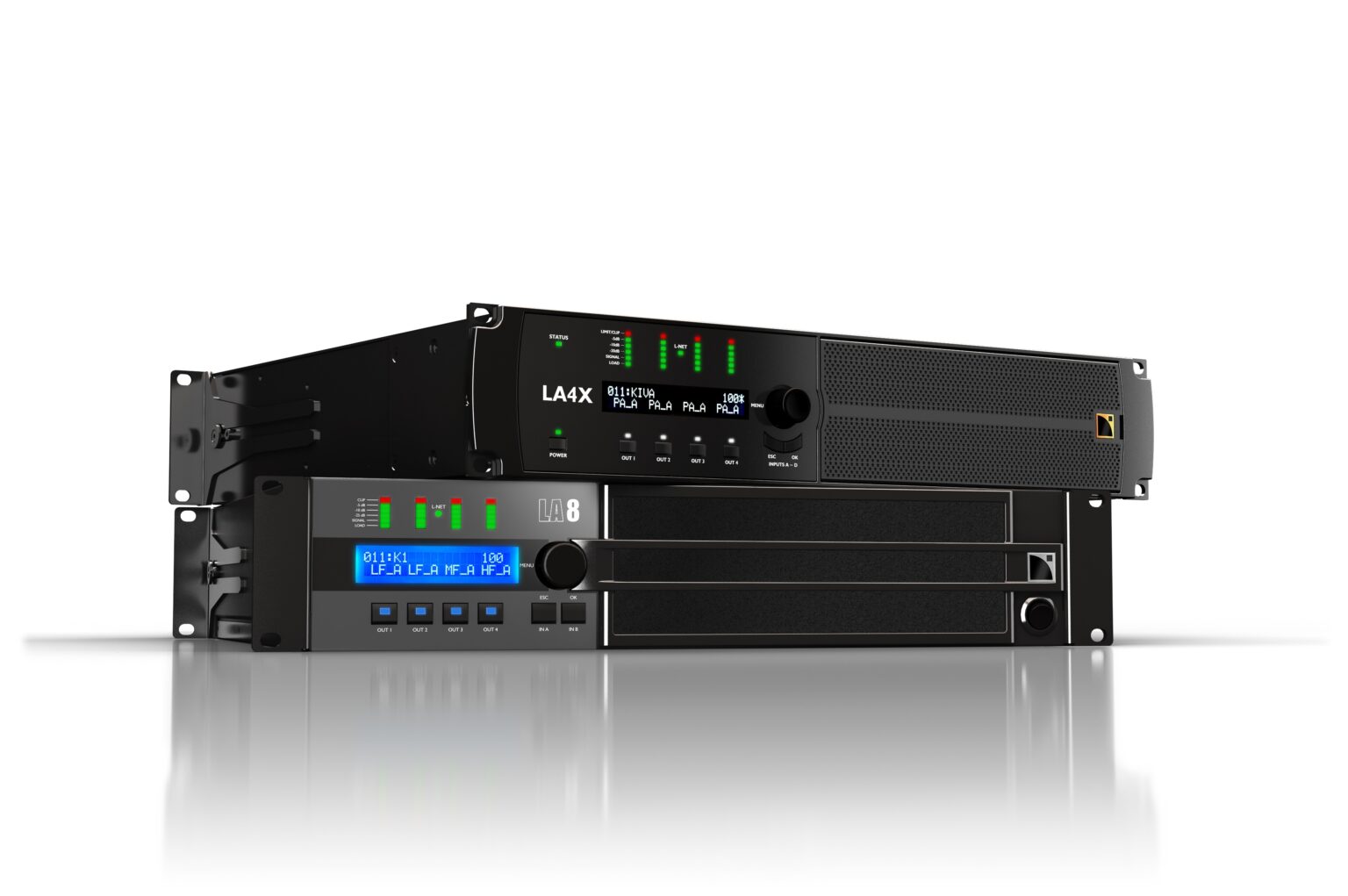
Subscribe to CX E-News
For a few months, the rumour has been circulating of a new L-Acoustics line source system, K2. The French loudspeaker manufacturer can now confirm the rumours are true. Florent Bernard, Director of Application-Touring and Stéphane Ecalle, Director of Marketing exclusively reveal the insider story behind the soon to be successor to V-DOSC.
The word on the street is that L-ACOUSTICS is to launch a “K2” system…
SE: The rumour is confirmed. Actually, three European companies are already partnering L-ACOUSTICS in our K2 pilot phase: SSE (UK), BLACK BOX MUSIC (Germany) and CONCEPT EVEN in France. They have been deploying K2 in the field, either as a main system or as a complement to K1. The pilot phase will be ending in November, with a significant amount of accumulated field experience. K2 has received outstanding comments from engineers and owners: we’re thrilled to have the green light for the market introduction. A production phase will ramp-up this December to address selected markets and the worldwide launch of K2 will follow around PROLIGHT & SOUND in 2014.
How does the system fit your product range?
FB: K2 is positioned in a similar application range as V-DOSC – typically for productions with audiences of anything up to 20,000. K2 actually delivers exactly the same max SPL and the same bandwidth as V-DOSC and it is therefore pretty logical that K2 will replace V-DOSC in our product line, with V-DOSC taking a well- deserved retirement after 22 years of loyal service to the brand! We will, of course, continue providing after-sales service to our V-DOSC customers for the coming years. Now, from a genetic standpoint, K2 has more of a K1 DNA transplanted into a 12” format enclosure…but with increased operational flexibility…
Where do you draw the line between K1 and K2?
FB: Since its introduction in the fall of 2008, the K1/K1-SB package has been optimized for very large scale productions, the 20,000+ audience size. This narrow market corresponds to the world of very large green field festivals, the largest arena tours, right up to stadium productions.
SE: From a business standpoint, there is a very high financial commitment required for a sound company to service this particular market with one or multiple K1 systems: the standard K1 stadium kit comprises more than a hundred K enclosures, plus SB28 subwoofers, racks and accessories. Considering the seven- figure investment at stake, the K1 market is by itself a selective one. Nearly fifty Rental Network agents around the world have chosen K1 over the course of the last five years and the system is recognized today as one of the top rider-friendly systems.
But beside the “small world” of “big K1”, there is a wider group of top companies and venues which operate in a very demanding market segment with an audience size up to 20,000 people. These rental and fixed installation owners have basically the same needs as K1 owners; they are exposed to demanding productions with top technical requirements. In order to respond to this clientele, sound companies have to choose a rider-friendly system accepted by the community of touring engineers. In today’s tough market, PA investments need to be secured with high stock rotation and high resale value down the road.
FB: From an application standpoint, these clients seek the K1 benchmark sonic signature to deliver the best performance to their own clients. Moreover, the package needs to be adapted in size, rationalized for transport and with an extremely flexible deployment. This is where K2 comes into play.
What design process did L-ACOUSTICS follow?
FB: Our application and R&D team began by writing down the K2 specifications. First, the acoustic performance had to be absolutely in line with K1 with a max SPL positioned 3 dB below its sibling and a bandwidth equivalent to K1. This determined the 12” format and the choice of drivers which are of the same league as K1.
Secondly, the vertical coverage had to be stretched to accommodate shorter throws and audiences with high tiers or balconies. The good news is that a 12” trapezoidal format authorizes twice the K1 maximum splay angle for a value of 10° vs. 5°.
SE: Next, we wanted to offer a lightweight system for medium-sized events or installations. The system needs to fit the rigging limitations in certain buildings. Also, for productions where temporary structures are deployed, the sound companies have to minimize their dimensioning and therefore prefer aluminium and /or foldable systems against steel. With lighter, simpler and more compact structures, the service provider achieves the competitive edge in terms of transportation, logistics and associated labour costs.
FB: Another feature we were looking for was adjustable horizontal directivity. System engineers need to sector the audience zones in the horizontal plane to reduce the overlaps between mains and fills to get an even SPL coverage and optimized intelligibility. With accurate control of the horizontal directivity, the sound designer can focus the acoustic energy onto the audience. In indoor situations, the sound is not projected onto reflective surfaces. This contributes to a maximization of the direct field/reverberant field and improves the sensation of proximity. In outdoor situations, the noise exposure of sensitive neighbourhoods is drastically reduced, as experienced during the pilot phase in the UK when SSE deployed their K1/K2 system in Hyde Park, a notoriously difficult site for sound control. The measurements taken on-site confirmed that we were perfectly in line with noise regulations.
Now, this “acoustic steering” is perfectly accomplished in the vertical plane by L-ACOUSTICS WST line sources. Horizontally, though, no manufacturer offers a line source system capable of efficiently steering acoustic energy in the horizontal plane on demand. With K2, you get 4 directivity settings in one box: 70° and 110° symmetrical; 90° asymmetrical left or right. Today we have reached a new level of directivity control in the horizontal plane. With K2, this control is effective down to 300 Hz, with the very smooth coverage pattern that people have come to love on our most recent systems. This sounds like a bold statement, but you just have to listen to the system to realize that it works and sounds great.
Finally, the K2 package had to offer full mechanical compatibility with the existing K1 and K1-SB elements. It must be noted that the control of directivity at low frequencies is the current challenge for manufacturers. The association of K1-SB and K1 in different configurations has provided some solutions in controlling low frequencies. These principles will equally apply to K2 and K1-SB with the same benefits. The best illustration of this is the recent Hollywood Bowl K1/K1-SB installation: the Bowl requires a system throw of 140m, with a consistency in SPL and tonal balance, in an ultra-sensitive residential area where noise pollution is unacceptable. The K1/K1-SB system installed in the Hollywood Bowl delivers the same experience to every seat in the audience. This is a tremendous benefit that sound providers can market to both mobile productions and fixed installation venues.
Of course, the above-mentioned configurations can be completed with our universal SB28 subwoofer to extend the bandwidth even further down to the infrasonic domain. The SB28 can also be deployed solely with K2 in more conventional setups.
K2 owners will need this K1-SB compatibility feature, to extend the K2 operating bandwidth or increase the LF throw with the combo K2/K1-SB. The rigging compatibility between the two systems also means that K1 owners can combine the two systems as they perfectly complement each other: K1 as a main system for long throw L/R applications, and K2 either as downfill to K1 or side fill, or delay. The combinations are limitless.
SE: So you can either consider K2 as a standalone system associated with K1-SB or SB28, or a complement to K1. Both systems run on the existing LA-RAK platform, so from a Rental Network standpoint, their compatibility represents an interesting cross rental opportunity for both K1 and K2 owners, with a very limited number of enclosure references in stock.
What challenges did L-ACOUSTICS face during the development of K2?
FB: We faced several challenges but the enclosure “weight loss” program is undoubtedly the most spectacular as we had to take a brand new R&D and industrial approach. When it comes to trimming the enclosures weight, the question of cabinet rigidity is central. Among the different varieties of Baltic birch plywood available, the high grade type used in all of our products remains the #1 choice for this size of enclosure. Its high fibre density is both solid and… heavy! If you reduce thickness, the panels are lighter, vibrate and…radiate omni-directionally like a vent. Not so good for directivity control and coherency and not acceptable for a premium system.
So we did two things: using computer analysis, we visualised the areas where the material did not contribute to stiffening the panel. Then we milled the K2 panels in an intricate pattern that yields the maximum stiffness/weight ratio. As for the side panels, the solution was to replace Baltic birch for a lighter and stiffer material: aluminium. The trick is that the K2 aluminium side panels play a triple role: they reinforce the mechanical rigidity of the box; they act inside as a progressive vent for laminar airflow, while the outside supports the suspension hardware with the best mechanical accuracy. It should also be noted that all suspension hardware elements were optimized to obtain the best resistance/weight ratio.
SE: It took L-ACOUSTICS several years of research on materials and industrial process. The results speak for themselves: K2 weighs 56 kg/110 lbs., that’s 50% of V-DOSC’s 108 kg, for the same max SPL and bandwidth and with no compromise on structural and acoustic performance.
The first commitment is about inventories. At L-ACOUSTICS, we believe that rental systems must have a minimum size to efficiently serve a market. You cannot underinvest (compromise on results) nor can you overinvest (take too much risk).
The second commitment is the adoption of the universal system standard (signal distribution with LA-RAK and LA8 amplified controllers): this is the guarantee that the system will always deliver the L-ACOUSTICS brand signature, in a predictable manner. For the rental agent, the benefit of adopting a standard makes his system 100% compatible for cross rental capabilities with other rental agents, with no interface headaches. The engineers know they will get what they want.
What distribution strategy are you going to implement with K2?
SE: K2 certainly addresses the needs of a wider customer base than K1, but K2 is definitely a premium system and our long-term strategy will not be altered. We created the Certified Provider Network three years ago, with Certified Integrators or Rental Agents and Distributors. K2 is aimed at both the fixed installation and rental markets.
Since we are relying on the regional presence and the expertise of our certified representatives, the distribution strategy of K2 will be simply based on two channels for our domestic markets : Certified Providers/Integrators for the fixed installation market and Certified Providers/Rentals for the Rental Network. For the markets where we are not directly present, we will rely on our Distributors.
Can anyone buy K2?
SE: Our Network indicates that the market potential for K2 is 300 companies worldwide. Whether anyone can purchase the system or not is really up to the customer. Choosing a large PA system like K2 has major consequences for a rental business, financially, commercially and technically. Rider-friendliness is the bottom line for return on investment, and the system resale value down the road is the icing on the cake from an investor standpoint.
Five years ago, we created a Rental Network Charter that illustrates this philosophy. And if you invest in K2 for rentals, you automatically enter into the logic of the Network, which maintains a set of commitments to benefit sound companies, clients and engineers.
The third commitment concerns user education. A K2 sound company is positioned as a top service provider and we cannot think of delivering a system without properly training its technicians on prediction tools, electronics and system. Everyone agrees that the education of technicians is critical and must be carried out by high level trainers.
So to cut this long explanation short, if K2 is the right system for a company, its techs and its clients, then they should get it! And they will have the last word on this, not L-ACOUSTICS.
Any other announcements for the K2 calendar you would like to make?
SE: The worldwide introduction of K2 is scheduled for PROLIGHT&SOUND 2014. However, we are proud to announce that the system will be seen and heard in the opening and closing ceremonies of a major winter sporting event in Russia…
But don’t take our word for it!… Contact your L-ACOUSTICS representative and schedule a demonstration at our headquarters in France or the US. And let your eyes and ears be the judge…
Subscribe
Published monthly since 1991, our famous AV industry magazine is free for download or pay for print. Subscribers also receive CX News, our free weekly email with the latest industry news and jobs.

